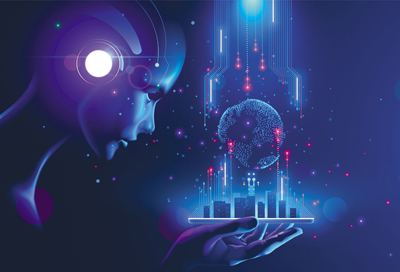Can you imagine a future where technology allows your employees to manipulate machines with their brain waves instead of manual controls or a keyboard? It might not be as far off as you think.

By David Coburn
Emerging technologies always draw their fair share of naysayers and skeptics—no doubt there were those who sniffed when the first powered forklift was introduced just over a century ago. It’s no different today for the small band of innovators in neurotechnology who are exploring a new tech frontier in the space between our ears.
By harnessing the brain activity of individuals and developing an understanding of how they react over time, these pioneers hope to provide businesses and industries of all kinds with a tool that will enable a new workplace paradigm defined by enhanced worker safety, performance and productivity. And ultimately, they say, the technology will essentially turn the human brain into an Internet of Things (IoT) device capable of controlling machines.
Science fiction or neuroscience in action?
Neurotechnology holds tantalizing potential to reinvent the work environment in warehouses, factory floors and distribution centers in the short term. It would involve using brain-computer interfaces (BCI) to collect and analyze data coming from employees in real time and tailor work schedules, training regimens and other aspects of work to their individual needs. Brain-machine interfaces (BMI) would be used to tell machines what to do—and are potential game-changers for those involved in material handling and the supply chain.
“A lot of people think we’re science fiction—but it’s just neuroscience in action,” said Olivier Oullier, president of San Francisco-based EMOTIV and a keynote speaker at MODEX 2020. “The company of the future? We’re solving the problems of today.”
EMOTIV is one of the leading developers and suppliers of wearable technology that can translate brain waves into digital signals—the 1’s and 0’s that form the basis of computer language—thus creating a brain-computer interface. The company’s technology incorporates electroencephalograph (EEG) sensors into a headset that records brain activity in real time and also has a nine-dimension motion sensor and the ability to reconstruct facial expressions. The collected information is then amplified, digitized and sent to a computer for storage and data processing.
 MHI Solutions Improving Supply Chain Performance
MHI Solutions Improving Supply Chain Performance